Modern telecommunication networks utilize optical transceiver modules that allow information to be transmitted over optical fiber cables at high rates. Different types of transceiver modules are available, and the 25G BIDI SFP28 is one of the most effective and compact. This guide is more of a tutorial explaining how the 25G BIDI SFP28 works, its advantages, its application, and its relevance as part of existing network systems. The guide will focus on the technical aspects of these modules that allow for fast, bi-directional communication while providing practical ways to increase bandwidth while reducing the cost of physical resources. Through this article, the readers will understand how, when fully exploiting the capabilities of the 25G BIDI SFP28, enormous changes and demands on network solutions can be achieved, thus allowing robust and sustainable solutions to be realized.
What is the sfp28 BIDI transceiver?
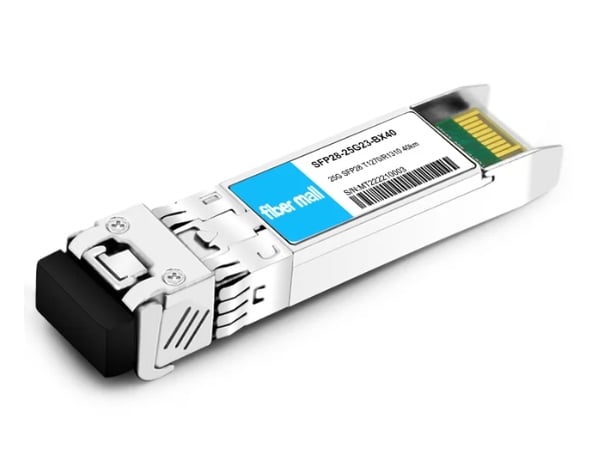
The SFP28 BIDI transceiver is compact, hot-pluggable, and designed for 25Gbps data rates while being able to transmit and receive data over a single fiber with the help of bidirectional technology. It works on a wavelength range of 1260nm to 1355nm; two channels are combined using Wavelength Division Multiplexing (WDM). This design minimizes the requirement for extra fiber infrastructure, thereby improving cost efficiency and increasing the deployment versatility of the data center and telecom networks.
Understanding the BIDI Technology
The application of bidirectional (BIDI) technology in optical transceivers provides a delicate approach and solution for receiving and sending data through a single fiber connection. A basic concept of BIDI technology is the employment of two optical wavelengths – one for data transmission and the other for reception. The SFP28 BIDI transceiver implements this via Wavelength Division Multiplexing (WDM) technology, which enables light to be split into channels, each carrying different data.
One of the advantages contain in the BIDI technology, is removing some backbone cabling and hence simplify the network configuration. It effectively reduces the infrastructure cost by 50% in fiber consumption compared to the traditional dual-fiber configuration. Likewise, BIDI modules consume less power and also assist in space conservation in congested networks.
Evaluating performance parameters such as the insertion and return losses for BIDI transceivers provides an insight into the performance level of the said device. For example, the average return loss for a SFP28 BIDI transceiver is approximately 1.8 dB insertion loss and return loss is reported to be less than -12 dB. These metrics indicate its proficiency in maintaining signal integrity over considerable distances.
In turn, BIDI technology appears to improve network scalability. Less physical assets leads not just to a reduction in costs, but allows room for flexibility to changing bandwidth requirements making it an innovative method for telecom operators and data centers looking for enduring development.
Benefits of 25g BIDI SFP28
The 25G BIDI SFP28 has specific advantages in modern network deployments, mainly cost reduction and easier infrastructure. It employs a single optical fiber for two-way data communication, thus minimizing the installation of additional fibers and reducing capital and operational costs of installation and maintenance. This transceiver also has very low operational requirements in energy consumption due to this design, resulting in overall reduced operational costs. In addition, the reduced size of the 25G BIDI SFP28 enables a more sensible use of space in data centers, allowing for future expansion and modification of the network. These qualities can be successfully applied in telecommunications and data centers where low-cost and cost-effective growth of the global network is needed.
Comparison with Traditional Dual-Fiber Modules
The 25G BIDI SFP28 transceiver outmatches the traditional dual-fiber modules on many technical levels suitable for advanced networks. These are the advantages:
- Infrastructure Efficiency: Traditional dual-fiber modules require the use of two separate fibers for transmit and receive channels creating the need for more cabling. With the BIDI SFP28, however, a single fiber is used thus leading to a drastic reduction in the amount of physical infrastructural support needed.
- Cost-Effectiveness: Needing fewer fibers leads to lower installation costs and lower maintenance costs. Traditional modules cost more owing to their sophisticated cable layout.
- Power Consumption: Due to the way they are structured, BIDI transceivers are more efficient as they consume less power than dual-fiber transceivers and thus are able to cut the operating costs incurred in running a data center while improving) environmentally friendly power usage.
- Space Utilization: BIDI modules take up little more than a quarter of the space dual fibers would use thus making it easier for the redesign process of data cabinets within a data center. This leads to effective scaling up as more components can be easily added.
- Bandwidth Adaptability: The 25G BIDI SFP28 is better suited for changing network requirements as it does require extra modifications for it to be able to work with a higher bandwidth as compared to the more traditional dual-fiber modules.
These benefits highlight the applicability of BIDI technology to enlarged and technologically modern networks designed for cost and operational effectiveness.
How Does the Optical Transceiver Module Work in Networks?
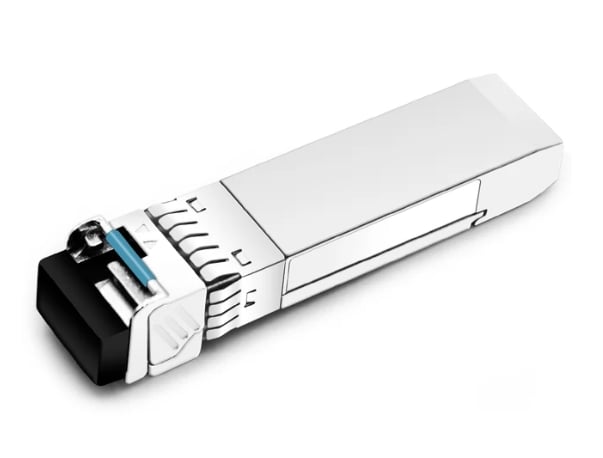
Role in data center Applications
The optical transceiver module aids in the interconnection of servers to network devices in data centers by enhancing the rate of data transfer. It acts as the physical connector that allows data to be received and sent through an optical fiber network, transforming electrical impulses into light and the other way around. As these modules facilitate two-way communication, they are important in controlling large amounts of data and satisfying the size requirements of contemporary data center architecture. In addition, thanks to better signal quality and lower transmission times which are vital for efficient data center operations, they improve network reliability and performance.
Integration with LC fiber patch cables
To ensure optimal data center interlinks, it is important to incorporate LC fiber patch cables integrated with optical transceiver modules. LC patch cables are easily handled and have a small cross-sectional area which makes them preferable in high density areas. These cables enable high transmission rates for data from network devices such as switches and servers by connecting them with optical transceivers.
The design of the LC connectors as push-pull aids in reducing loss of connection by preventing disconnection, which helps keep the network structure stable. Because of their ability to align precisely, the LC connector is able to operate without losing signal quality, which is essential to avoid data loss or signal degradation. This means there is a low lag. To say the least, it offers fast-rate processing of data, which the current standard of the data centers requires.
The use of LC patch fiber cables from a data standpoint, therefore, permits data centers to transmit information over greater distances with less signal loss. For example, with OM4 multimode fiber, LC fiber cables can realize a typical modal bandwidth of up to 4700 MHz.km, achieving data rates of 100 Gbps over 150 meters. This wide bandwidth range is crucial in enabling the large data traffic associated with modern networks today. Furthermore, using LC connectors enhances the scalability of data center facilities, which is suitable for both existing and future network growth.
Understanding 40km Reach Capability
The 40km reach capability in optical networks mainly describes the ability to transmit over a range of 40km without the necessity to regenerate the signal or any considerable loss in signal strength. This is, in turn, facilitated by certain transceivers, such as those that belong to long-range (LR) applications and are based on single-mode fiber (SMF). The combination of submicron laser technology and modulation of NRZ or QAM allowed such performance to be attained. Extending transmission capabilities beyond 40 km is a valuable aspect in metropolitan and regional data network deployments, which go beyond the usual minimum distance of short-reach connections but do not require the extensive use of wavelength/DWDM multiplexing techniques that characterize long-haul systems.
Why Choose 25g sfp28 for Your Network?
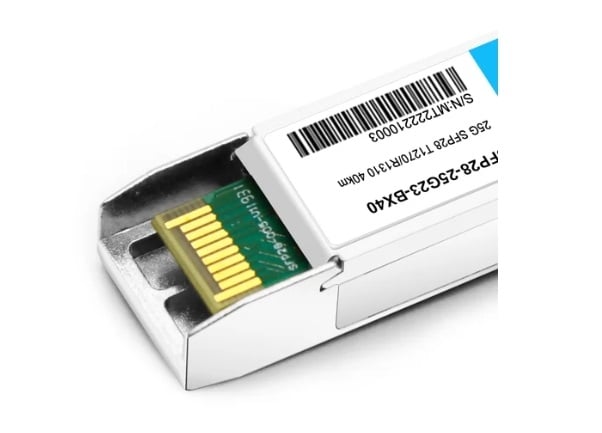
Advantages over 10G and 100G Solutions
In the middle between the previous generation 10 G solutions and the cutting-edge 100 G offerings, the fifth generation 25 G SFP28 standard has some distinctive advantages with respect to performance, cost, and scalability. Firstly, cables of SFP28 modules can sustain 25 Gbps per lane, which makes them operate more effectively compared to the current 10G solutions that only drive 10 Gbps. The increase in capacity provides 2.5 times the amount of 10G, providing higher data throughput measures.
Along the same lines, 25G SFP28 modules are, in comparison, more inexpensive than 100G setups. The reason for that is while 100G needs four 25G lanes, with each of them using complicated microcomponents with high power, the 25G SFP28 modules have enough enablement for sufficient application support in data center areas while consuming lower operational power and generating less thermal energy. This, in turn, means reduced capital outlay and energy savings in high-density environments.
In addition, the 25G has a straight sail transmission into 10G line requiring minimum alterations and thus, upgrades are simple. This means there is no necessity for the network operators to completely upgrade their infrastructure to a 100G network in order to be able to expand their networks as they so desire. Collectively, these advantages make 25G SFP28 a strategic solution for the deployment of networks that need to address today’s situation and their future potential at the same time.
Key Features of the 25gbase sfp28
- Data Rate and Performance: The entire system is based on the cutting-edge 25GBASE-SFP28, which utilizes a single operating lane, so this means that there is no need for additional lanes or even extra support. It is noteworthy that its operation is fully efficient, and its throughput is optimized. Additionally, its main benefit is the data rate, which is statistically proven to be twenty-five gigabits per second, adding another level of profundity to this entire system even further.
- Backward Compatibility: As standard, the 25GBASE-SFP28 can be simply installed on any 10G setups and hardware without any changes or implementations needed on the physical side of this technology, allowing us to scale any network averagely. This allows immediate and more extensive infrastructural enhancement whilst keeping ordinal spatial layout intact, more importantly, allowing for a rapid network performance increase.
- Power Efficiency: The 25G SFP28 modules function at a relatively lower power percentage, which with time translates into energy conservation, this in turn allows for lesser thermal output as a byproduct. Due to this factor substantially enhancing operational efficiency of data centers, and sustainability becoming a lot more incentivized due to lower materialistic effort usage.
- Cost-Effectiveness: A clearer sign of cost effectiveness is that the SFP28 has a much lower ownership value than the 10G equipment, realizing that it does require less power and an even fewer more components is more of a point of economic gain rather than a loss relative to the valuation ratio of most investors. Turning one step from 10G systems to SFP28 is of course going to be pricey but the increase in performance is staggering.
- Scalability: Fortunately, with the advancement of networks and modern technology, the heightened data demand of the SFP28 can be pacified. Expansion packs deploying such advanced capabilities can in practice stimulate innovation without compromising quality, this in turn changes how we look at infrastructure development by addressing what the needs of tomorrow will be.
- Reliable Connectivity: Data integrity and better quality network performance are the main benefits of the SFP28’s advanced error correction and improvements to integrity features. Such advanced level of control allows for significant strengthening of core overheads by improving connectivity limits.
Spotlight on DDM and dom Monitoring
In terms of contemporary network surroundings, digital diagnostics monitoring (DDM) and digital optical monitoring (DOM) are critical tools that guarantee the operational continuity of networks. They allow network managers to access diagnostic data in real-time, hence allowing for the operational surveillance of the status of the optical transceiver units. DDM and DOM are informative regarding optical power, temperature, voltage, and bias current, which are helpful in estimating the operational lifetime of the component and in avoiding a breakdown. The situation is especially useful since it helps networks to operate effectively and cuts down on idle time while reducing repair costs. This emphasizes the importance of such registries in detecting troublesome areas to enhance the stability and performance of the network systems.
What are the Specifications of bidi sfp28?
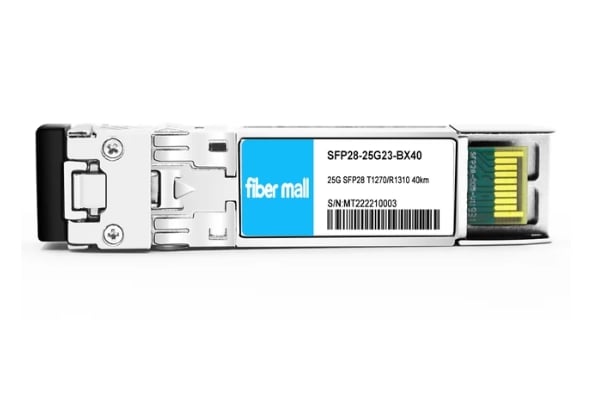
Wavelength and Data Rate Considerations
The BiDi SFP28 modules are meant for two-way transmission with the use of two different wavelengths over a single fiber. The operating wavelengths are commonly at 1270 nm and 1330 nm, providing two-way communication. This has been made possible through this wavelength division multiplexing (WDM) technology, which is really important for optimizing the use of existing fiber cable systems.
On a per wavelength basis, the throughput for the BiDi SFP28 modules is 25 Gbps. This capacity makes them suitable for applications in places that demand high bandwidth such as data centers and enterprises. The deployment of BiDi SFP28 modules will improve the efficiency in the use of wavelengths making the deployment of fiber assets relatively cheap and yield strong and dependable networks.
Additionally, BiDi SFP28 modules are MIC-ENA certified making them compliant with the IEEE802.3cc standard . High throughput rate and suitable management of wavelengths are key characteristics for easy configuration into the modern networks architecture that requires support for heavy data usage.
Environmental temperature range Suitability
Modules of the BiDi SFP28 type are made in such a way as to be able to function between a specific temperature range, which is usually between the range of 0 to 70 degrees Celsius for commercial grade units and between -40 to 85 degrees Celsius for industrial counterparts. This wide temperature range allows them to be used in all types of environments, from controlled temperature data centers to harsh external environments. Temperature tolerance of these modules is critical to ensuring optimum performance and reliability under different environmental conditions. The BiDi SFP28 modules are designed to ensure that regardless of geography or climate, the network is able to function optimally, and thus, your critical investment in the network is safe.
Compliance with Industry Standards like MSA and SFF-8472
Біді модулі SFP28 complying with the standards established by various authorities allows interacting across a wide variety of networking environments. MSA standardization as it relates to the specific form factor and optical parameters provided the basis for such interoperation among modules of different vendors. This standardization is important in multiple vendor networks; it provides a way for a gradual evolution of the network and its expansion without immense alterations to an already existing one.
Besides, SFF-8472 compliance allows for two-wire interface (TWI) access to some operating parameters, crucial status, and diagnostic information for the module. This feature provides the opportunity to actually measure module parameters on the operation temperature, which include voltage, laser bias current, and optical power level. These diagnostic features assist in predictive maintenance and network management by monitoring the status and performance trends of software modules. In unison, MSA and SFF-8472 standards make sure that SFP28 BiDi modules are not only interoperable but also provide management interfaces supporting effective and dependable network deployment.
How to Ensure Compatibility and Performance in optical interconnect solutions?
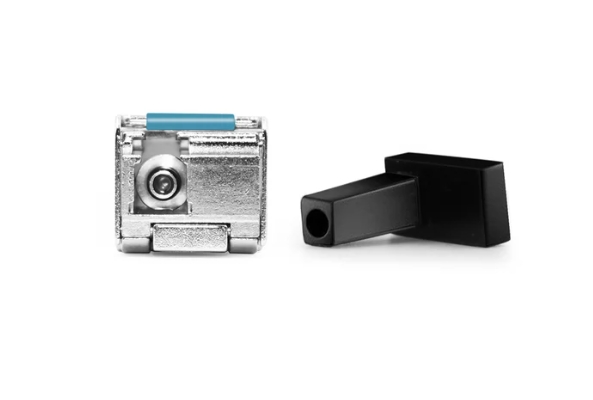
Interoperability with Cisco and Other OEMs
To achieve full compatibility and operation of BiDi SFP28 modules with Cisco and other Originals Equipment Manufacturers (OEMs), observe the following instructions:
- Check that the MSA and SFF-8472 standards are followed as regarding the module’s production because it enables working with other manufacturers’ equipment.
- To check for compatibility, refer to the product documentation or Qualified Vendor List (QVL) of the OEM in accordance with the country of origin.
- Make use of certified transceivers and cables, which are explicitly recommended by the OEM to rocks replace other types.
- Ensure that firmware is updated on a regular basis and network KPIs are tracked to preempt any issues relating to interoperability from arising.
Ensuring compatibility with Existing Infrastructure
Integrating BiDi SFP28 modules with existing network infrastructures is a systematic process. The first step involves conducting a detailed survey of all the components of the current network, detailing their standards and settings. Afterward, verify Physical Medium Dependent (PMD) compatibility by checking if the modules can connect satisfactorily with the respective types of fiber cabling and connector standards already in place. Take into account the data rate and the wavelength specifications of the older systems so as to avoid any bandwidth crunches. Furthermore, you need to check whether the power budget of the network fits the requirements of the module as well as the requirements for optical link loss so that all the connections maintain the integrity of the signal. A structured compatibility testing strategy reduces the chances of integration challenges while increasing the performance of the entire network.
Optimal Installation Practices for Single-mode Fiber
There are a number of best practices that should be followed in order to ensure that the network works correctly when it comes to the deployment of single-mode fiber. For a start, make sure that quality pre-terminated cable assemblies are used, as this should reduce the amount of signal which is lost during the whole process while also making it simple to install. The connectors should be cleaned in a meticulous manner so as to avoid any type of contamination, which would, in turn, negatively affect the quality of the signal. During the installation process, the minimum bend radius, as specified by the manufacturer, should be adhered to in order to prevent any damage and attenuation. In addition, a complete set of tests should be performed after installation using the Optical Time-Domain Reflectometer (OTDR) to check the available TDM-OTDR performance and confirm the strength and quality of the links that were established. It should be emphasized that adherence to these practices improves the reliability and efficiency of the deployment of single-mode fibers in compliance with the requirements of the latest industry standards.
Reference Sources
Frequently Asked Questions (FAQs)
Q: What Is a 25G BIDI SFP28 Transceiver?
A: A 25G BIDI SFP28 transceiver is a bi-directional optical transceiver module that is specially designed for sending signals over an extended distance or a short distance. It uses one fiber to transmit and the other fiber to receive the signal, which is called bi-directional (BIDI) technology, which helps eliminate the need to use multiple fiber optic cables and enhances the performance of the network infrastructure.
Q: How does a 25G BIDI SFP28 transceiver connect to a network?
A: For connecting to a network, the 25G BIDI SFP28 transceiver has an LC interface that utilizes single-mode fiber (SMF) cables. These transmitters and receivers are found in data centers, cable plants, wireless and 5G networks, and other Ethernet-fast applications.
Q: What distance can a 25G BIDI SFP28 transceiver support?
A: The transmission distance of a 25G BIDI SFP28 transceiver is greatly determined by the specific model that a person would choose, but there are several that can transmit data for up to 10 and 20 kilometers. These specifications also depend on the network configuration, allowing the transceivers to be greatly versatile.
Q: Is it possible to connect a fiber media converter with a 25G BIDI SFP28 transceiver?
A: A 25G BIDI SFP28 transceiver may indeed be used together with a fiber media converter, hence accomplishing the connection between the two. As such, this enables the transceiver to interface with different signal types, such as a conversion from an optical signal to an electrical signal, thus making a variety of network configurations possible.
Q: Are 25G BIDI SFP28 transceivers ethernet compliant?
A: Yes, 25G BIDI SFP28 transceivers are compliant with the specifications of 25G BIDI SFP28 in regards to ethernet. They support the transfer of large amounts of data at high speed and are found in a number of current-day networks to facilitate effective and efficient communication.
Q: Why is the use of 1310nm wavelength on 25G BIDI SFP28 transceivers important?
A: 25G BIDI SFP28 transceivers contain 1310nm wavelength, which is widely used with single-mode fiber when sending optical signals. It has excellent potential for long-distance reach of 10km or even 20km because it has low attenuation.
Q: How does the DDM (Digital Diagnostic Monitoring) feature interconnect with the 25G BIDI SFP28 transceivers?
A: For the 25G BIDI SFP28 transceiver, DDM interfaced real-time monitoring of temperature, voltage, and optical power, among other parameters of concern for the unit. It is an additional layer of trust in the performance to be provided, combined with an option for rapid troubleshooting of the issue or maintenance of that particular part of the network.
Q: Can 25G BIDI SFP28 transceivers be utilized in high-density cable installations?
A: Certainly, 25G BIDI SFP28 transceivers are suitable for high-density cabling environments. Their small size permits efficient space utilization, and they are usually located in data centers where there’s a need to pack in as many connections as possible in a small area.
Q: Are there any particular considerations for OEMs to use 25G BIDI SFP28 transceivers?
A: OEM specifications for 25G BIDI SFP28 transceivers may differ from one manufacturer to another. It is paramount to verify that the transceivers are suitable for certain types of network devices and that the equipment meets OEM requirements for the proper functionality and interoperability with other devices.
Related Products:
-
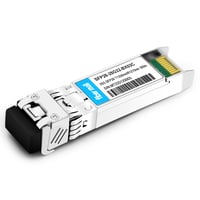 SFP28-25G32-BX03C 25G BX BIDI SFP28 TX1330nm/RX1270nm 300m LC SMF DDM Transceiver Module
$58.00
SFP28-25G32-BX03C 25G BX BIDI SFP28 TX1330nm/RX1270nm 300m LC SMF DDM Transceiver Module
$58.00
-
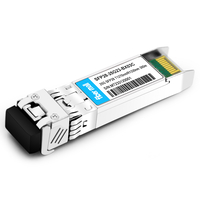 SFP28-25G23-BX03C 25G BX BIDI SFP28 TX1270nm/RX1330nm 300m LC SMF DDM Transceiver Module
$58.00
SFP28-25G23-BX03C 25G BX BIDI SFP28 TX1270nm/RX1330nm 300m LC SMF DDM Transceiver Module
$58.00
-
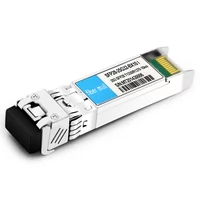 SFP28-25G32-BX10I 25G BX BIDI SFP28 TX1330nm/RX1270nm 10km LC SMF DDM Transceiver Module
$60.00
SFP28-25G32-BX10I 25G BX BIDI SFP28 TX1330nm/RX1270nm 10km LC SMF DDM Transceiver Module
$60.00
-
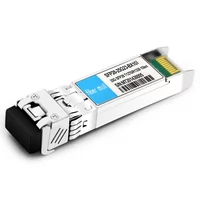 SFP28-25G23-BX10I 25G BX BIDI SFP28 TX1270nm/RX1330nm 10km LC SMF DDM Transceiver Module
$60.00
SFP28-25G23-BX10I 25G BX BIDI SFP28 TX1270nm/RX1330nm 10km LC SMF DDM Transceiver Module
$60.00
-
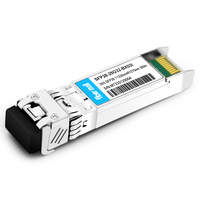 SFP28-25G32-BX03I 25G BX BIDI SFP28 TX1330nm/RX1270nm 300m LC SMF DDM Industrial Transceiver Module
$75.00
SFP28-25G32-BX03I 25G BX BIDI SFP28 TX1330nm/RX1270nm 300m LC SMF DDM Industrial Transceiver Module
$75.00
-
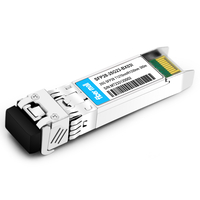 SFP28-25G23-BX03I 25G BX BIDI SFP28 TX1270nm/RX1330nm 300m LC SMF DDM Industrial Transceiver Module
$75.00
SFP28-25G23-BX03I 25G BX BIDI SFP28 TX1270nm/RX1330nm 300m LC SMF DDM Industrial Transceiver Module
$75.00
-
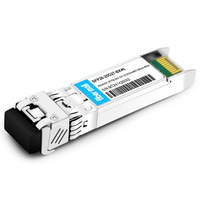 SFP28-25G27-BX40 25GBASE SFP28 BIDI ER TX1270nm/RX1330nm 40km LC SMF DDM Optical Transceiver Module
$170.00
SFP28-25G27-BX40 25GBASE SFP28 BIDI ER TX1270nm/RX1330nm 40km LC SMF DDM Optical Transceiver Module
$170.00
-
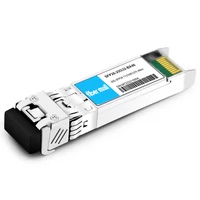 SFP28-25G32-BX40 25GBASE SFP28 BIDI ER TX1310nm/RX1270nm 40km LC SMF DDM Optical Transceiver Module
$180.00
SFP28-25G32-BX40 25GBASE SFP28 BIDI ER TX1310nm/RX1270nm 40km LC SMF DDM Optical Transceiver Module
$180.00
-
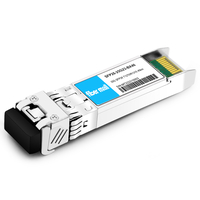 SFP28-25G23-BX40 25GBASE SFP28 BIDI ER TX1270nm/RX1310nm 40km LC SMF DDM Optical Transceiver Module
$180.00
SFP28-25G23-BX40 25GBASE SFP28 BIDI ER TX1270nm/RX1310nm 40km LC SMF DDM Optical Transceiver Module
$180.00
-
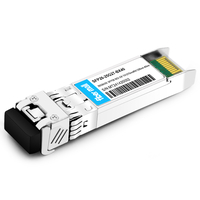 SFP28-25G27-BX40I 25GBASE SFP28 BIDI ER TX1270nm/RX1330nm 40km LC SMF DDM Industral Optical Transceiver Module
$190.00
SFP28-25G27-BX40I 25GBASE SFP28 BIDI ER TX1270nm/RX1330nm 40km LC SMF DDM Industral Optical Transceiver Module
$190.00
-
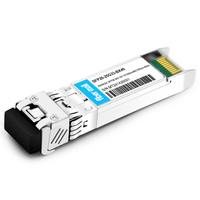 SFP28-25G33-BX40I 25GBASE SFP28 BIDI ER TX1330nm/RX1270nm 40km LC SMF DDM Industral Optical Transceiver Module
$190.00
SFP28-25G33-BX40I 25GBASE SFP28 BIDI ER TX1330nm/RX1270nm 40km LC SMF DDM Industral Optical Transceiver Module
$190.00
-
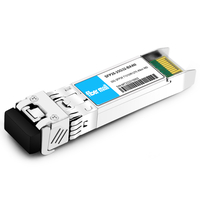 SFP28-25G32-BX40I 25GBASE SFP28 BIDI ER TX1310nm/RX1270nm 40km LC SMF DDM Industral Optical Transceiver Module
$200.00
SFP28-25G32-BX40I 25GBASE SFP28 BIDI ER TX1310nm/RX1270nm 40km LC SMF DDM Industral Optical Transceiver Module
$200.00
-
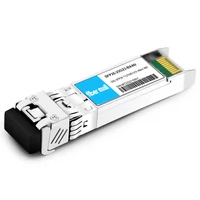 SFP28-25G23-BX40I 25GBASE SFP28 BIDI ER TX1270nm/RX1310nm 40km LC SMF DDM Industral Optical Transceiver Module
$200.00
SFP28-25G23-BX40I 25GBASE SFP28 BIDI ER TX1270nm/RX1310nm 40km LC SMF DDM Industral Optical Transceiver Module
$200.00
